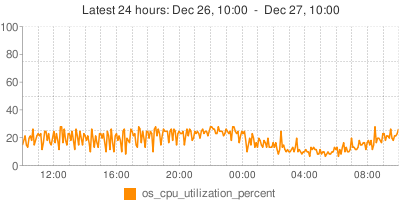This post continues Generating Google line charts with SQL, part I, in pursue of generating time series based image charts.
We ended last post with the following chart:
http://chart.apis.google.com/chart?cht=lc&chs=400x200&chtt=SQL%20chart&chxt=x,y&chxr=1,-4716.6,5340.0&chd=s:dddddddddeeeeeefffffffffeeeedddcccbbaaZZZYYYXXXXXXXXXYYYZZabbcdeefghhijkkllmmmmmmmmllkkjihgfedcbZYXWVUTSRRQQPPPPQQQRSTUVWXZacdfgijlmnpqrssttuuuttssrqonmkigfdbZXVTSQONMLKJIIIIIIJKLMOPRTVXZbegilnprtvwyz01111110zyxvtrpnkifcaXUSPNLJHFECBBAAABBCEFHJLNQTWZcfilortwy1346789999876420yvspmjfcYVSOL
which has a nice curve, and a proper y-legend, but incorrect x-legend and no ticks nor grids.
To date, Google Image Charts do not support time-series charts. We can’t just throw timestamp values and expect the chart to properly position them. We need to work these by hand.
This is not easily done; if our input consists of evenly spread timestamp values, we are in a reasonable position. If not, what do we do?
There are several solutions to this:
- We can present whatever points we have on the chart, making sure to position them properly. This makes for an uneven distribution of ticks on the x-axis, and is not pleasant to watch.
- We can extrapolate values for round hours (or otherwise round timestamp resolutions), and so show evenly spread timestamps. I don’t like this solution one bit, since we’re essentially inventing values here. Extrapolation is nice when you know you have nice curves, but not when you’re doing database monitoring, for example. You must have the precise values.
- We can do oversampling, then group together several measurements within round timestamp resolutions. For example, we can make a measurement every 2 minutes, yet present only 6 measurements per hour, each averaging up 10 round minutes. This is the approach I take with mycheckpoint.
The latest approach goes even beyond that: what if we missed 30 minutes of sampling? Say the server was down. We then need to “invent” the missing timestamps. Note that we invent the timestamps, we do not invent values. We must present the chart with missing values on our invented timestamps.
I may show how to do this in a future post. Meanwhile, let’s simplify and assume our values are evenly spread. Continue reading » “Generating Google line charts with SQL, part II”
